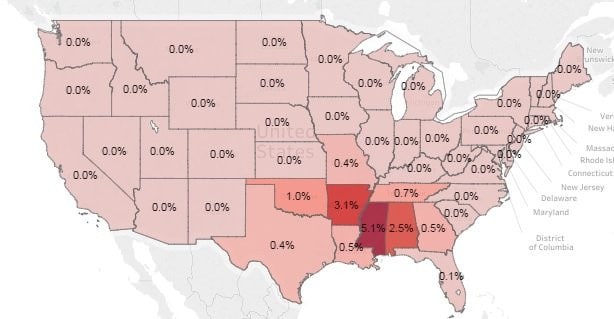Nearly 19,000 Alabama students received corporal punishment in the 2013-2014 school year, according to an analysis from the U.S. Department of Education Office of Civil Rights. Trisha Powell Crain, an independent journalist, crunched the numbers in a special report for Al.com. She discovered some disparities in a practice steeped in Southern culture. Listen above or read key excerpts below.
The Culture of Corporal Punishment in the South
When I first thought about this story, I wasn’t sure it was a big deal. Then when you look at what the data shows … how the use of paddling is reserved to the Southern States … and of course, Mississippi had the highest rate of paddling, and then Arkansas and Alabama. You have to begin to wonder why. I kept digging into the data to see who do we paddle and how many schools paddle. A little less than half the schools in Alabama paddled a child during the 2013-14 school year. And it paints an interesting picture when you put it on the map. In Alabama there were 18,749 students who were paddled.
The Prevalence of Paddling in Rural Counties
When you put it up on a map and when you understand the way Alabama school districts are laid out, you can see that these are rural school districts. Education Week did a national analysis a few weeks ago, and they did reach that conclusion. They said that in the schools where paddling is used, they do tend to be rural. And further they said they also tend to be heavily African-American, and they also tend to be high-poverty. Is this correlation? Is it causation? And then it is widely known and sort of accepted in the South that this is how we discipline children.
Local School Policies on Paddling
It is completely up to the local school district, which means the local board of education, because that’s who sets the policies. So if a local school board says we don’t believe in paddling children, then they simply pass a policy. I will say that 107 school districts in Alabama did have a school where a child was paddled. There were 133 districts in the total, so that leaves 26 districts where no students were paddled.
Racial Disparities and Paddling
One of the purposes in collecting this information is to determine if disciplinary polices are being used to discriminate. All the data so far tells us that black children are punished more harshly for the same offenses that white children commit. In looking at the rate of paddling, in the schools where kids were paddled, black girls accounted for 47 percent of the paddlings of all girls yet they accounted for only 24 percent of the population. So there is a big difference there. Some data from a couple of years ago shows that we are, in Alabama, particularly harsh on Black girls.

